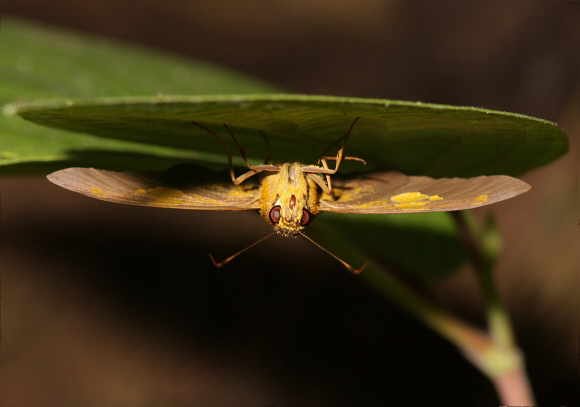
Introduction
The subfamily Pyrginae are characterised by their habit of basking with wings outspread, compared to the half-open position favoured by the Hesperiinae.
The tribe Eudamini includes 44 genera in the Americas, amongst which are the Long-tailed Skippers Urbanus, Chioides and Aguna; and other familiar genera including Phocides, Autochton, Astraptes and Calaenorrhinus.
The genus Pseudonascus was erected in 2008 by Austin to separate the sole species paulliniae from 5 other species – phocus, broteas, phintias, prax and solon, all of which remain in the genus Nascus, in which paulliniae was formerly placed. Both genera comprise of large red-eyed skippers, whose forewings are marked with several hyaline spots. As well as having a distinctive pattern of hyaline spots, Pseudonascus paulliniae has longer antennae than Nascus, and differences in the genitalia and wing venation.
Pseudonascus paulliniae is distributed from Mexico to Bolivia and Brazil.
Habitats
This species is found in tropical and subtropical forest at altitudes between about 100-600m.
Lifecycle
To be completed.
Adult behaviour
These butterflies are primarily crepuscular in behaviour. During the daytime they habitually hide under leaves, with their wings always held fully outspread. Most often they choose to hide beneath leaves that are less than a metre above ground level.
They are extremely alert at all times, and if disturbed by a human intruder they suddenly dart out, circling and zig-zagging about at incredible speed, but then within 2 or 3 seconds have dived back under another leaf, flipped upside down, and turned to face outwards, staring in the direction of the intruder.
